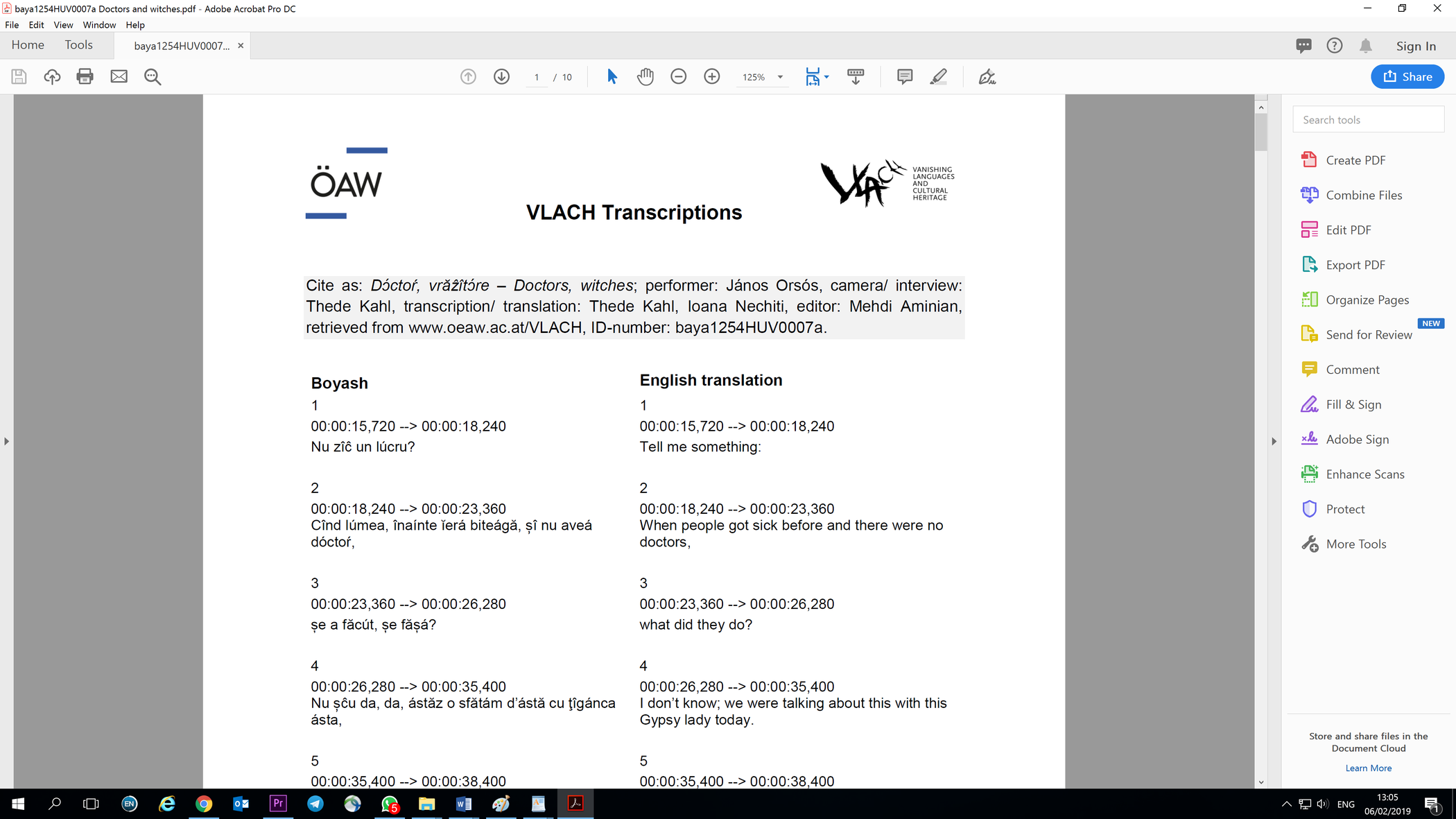Introductory texts on varieties
Introductory texts on varieties
All published material on VLACH need a short introduction, which follows a common structure:
- header
- language: variety exonyms (esp. English), endonyms
- language codes (esp. glottolog, others)
- short definition
- 2-3 sentences, e.g.: xxx is a xxx language / belongs to xxx family, is spoken in xxx, its speakers are called xxx (exonyms) (endonyms). xxx derives from xxx.
- short description (every topic might have some sentences, but SHORT)
- distribution in region of origin and in the world
- official status
- history
- varieties
- phonology, grammar
- situation (number of speakers, literacy, education, media, vitality, revival)
- references
- desiderata
- basic scientific bibliography
- internal links
- external links
- author(s) of intro text, year of publication
This general introduction should be followed by a brief description of the collection presented: How, when and where was it created? Who was involved in the project and what support did the communities provide? Where are further data and raw materials archived?
Bilingual transcription pdfs
The best way to produce pdf files with the whole transcriptions of clips is to export them directly from the Adobe Premiere project.
- The first step is to select both Original and English subtitles under your file directory.
- Then go to File>Export>Captions and select the .srt option and save the files in a folder destination.
- Download the subtitles template empty (word) and see an example of a completed subtitles template.
- Open the template and change the header based on the info of your video like in the document subtitles template empty.
- Go to the destination folder where the .srt files are located and open the original file and select all and copy.
- Open the template file and paste the original transcription into the original section of the table.
- Do the same for the English and paste into the English section of the table.
- Make sure that the text is Arial 10, the titles Arial 11, aligned to the left.
- As shown in the below images, select the <font color=#FFB227FF> and copy and press ctrl F. Go to the replace section. Press paste aste and replace all with nothing.
- Do the same step for the </font>.
- Save as a pdf and name the file with code name and the English name. For example: “baya1254HUV0007a Doctors and witches”. Your transcription is ready!




The cite box
The cite box
Cite as: Original Title – English title; performer: first name (X) name Y, camera/ interview: XY Transcription/ Translation: XY, XY, editor(s): XY, retrieved from www.oeaw.ac.at/VLACH, ID-number: XXX.
e.g.:
Cite as: Cînd irέ rátu – During the war; performer: Jászminka Bogdán, camera/ interview: Ioana Nechiti, transcription/ translation: Thede Kahl, Ioana Nechiti, editor: Mehdi Aminian, retrieved from www.oeaw.ac.at/VLACH, ID-number: baya1254HUV0005a.
Dealing with proper names (toponyms, anthroponyms)
Dealing with proper names (toponyms, anthroponyms)
Toponyms
Please be aware of different practices and writing toponyms. The UNGEGN recommendations, published as UN resolutions, can be used without hesitation. As many operators of databases around the world adhere to UNGEGN recommendations, we follow geonames concerning the use of toponymes which seems to be more consequent concerning the use of exonyms than Google maps or other providers.
Anthroponyms
Personal names are less a subject of the writing rules of the respective language than to personal preferences. In principle we can use orthography of the official documents (passport) which is usually mentioned in the Mappa Campi while fieldwork. This official writing might differ from scientific transcription, e.g. in Russian:
| "scientific" | "passport" | |
| Marija | Mariia | |
| Šaraev | Sharaev |
As not all persons identify with their official passport names, we always prefer to mention personal names in the way and orthography the informant prefers it. In Greek for example, names like Kostas, Mikis or Dina never appear in passport or other official documents. In these cases, we follow the informant's preference. If somebody prefers to appear anonymous or with an pseudonym, this is respected without any exception.
Orthography guidelines
Orthography guidelines
To avoid inconsistences in English orthography, we decided for British spelling:
- colour, flavour, humour, labour, neighbour
- analogue, catalogue, catalogue, dialogue
- apologize, organize, recognize
- analyse, breathalyse, paralyse
- travel, travelled, travelling
- fuel, fueled, fuelling
- leukaemia, manoeuvre, oestrogen, paediatric
- defence, licence, offence, pretence
- program
We usually use "Capitalized Case" when we name titles or chapters. As the names of websites and links are not considered to be chapters or classic headings, we use sentence case when naming links, sites and collections, e.g. Architecture and monuments, Landscape and settlements, Flora and fauna.